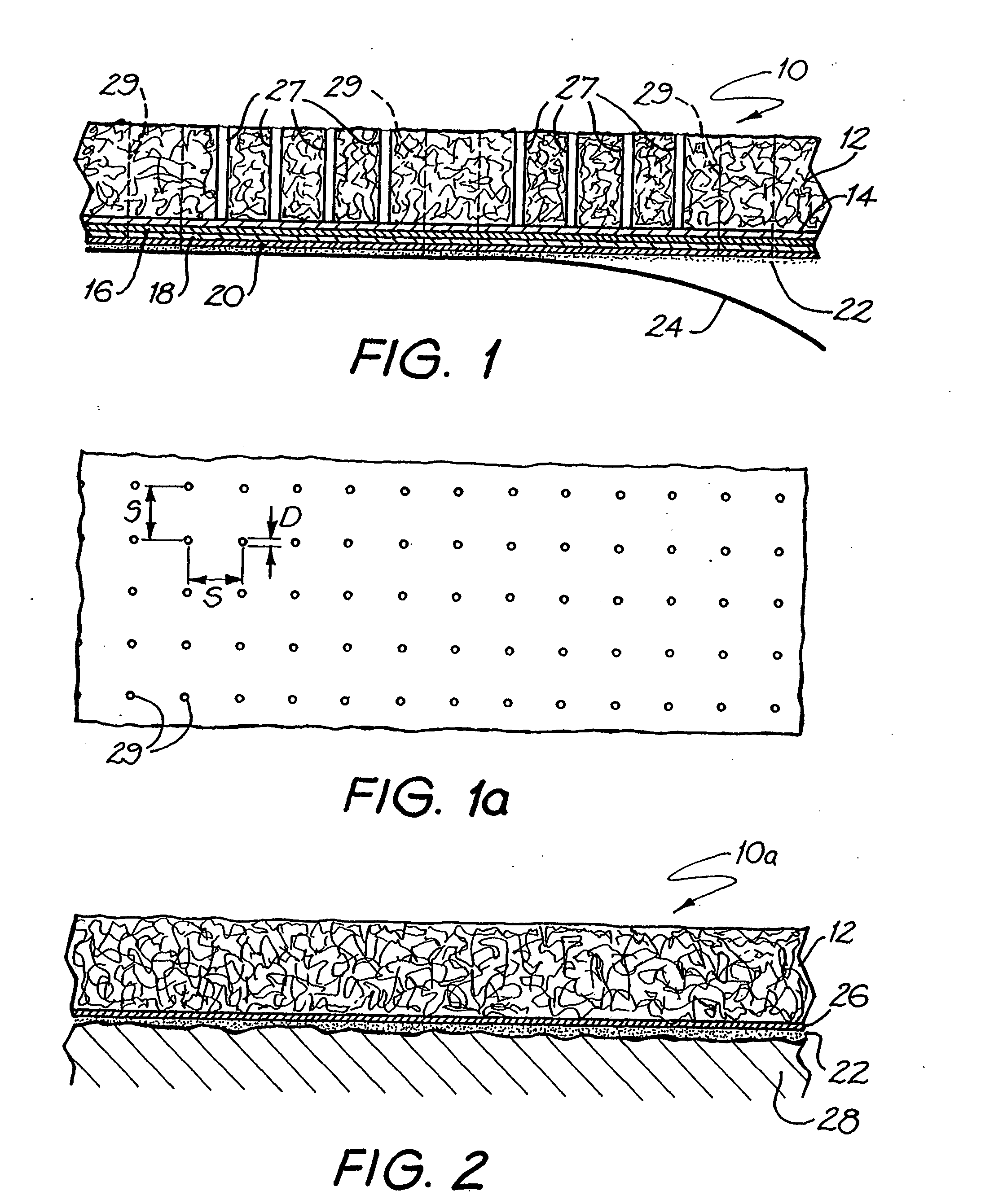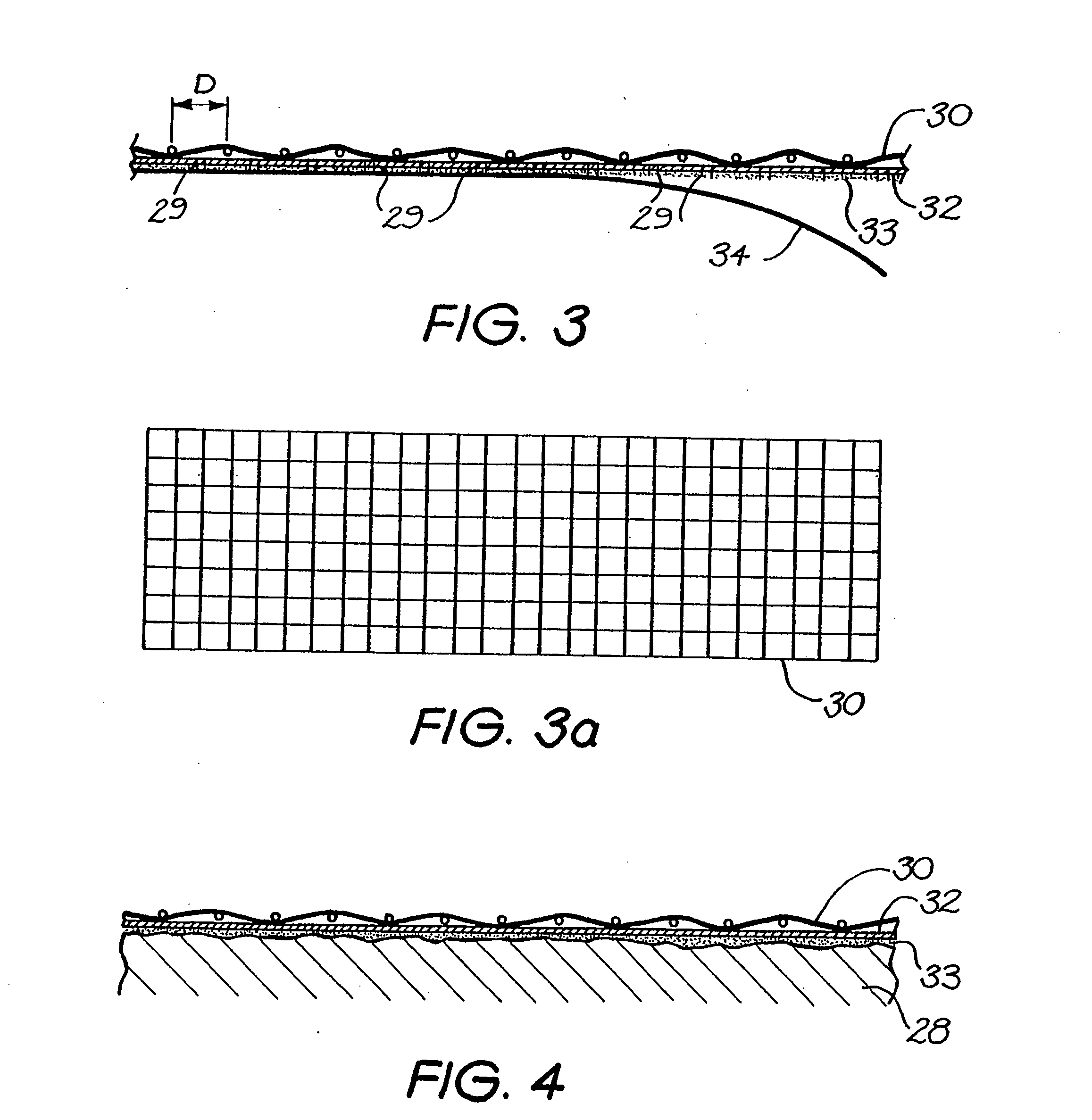Multi-layer covering
a multi-layer, covering technology, applied in the direction of roof covering insulation, structural elements, building components, etc., can solve the problems of time-consuming, cracks and undulations of surfaces in buildings and structures, and exiting methods for treating buildings by rendering them or the like, etc., to achieve the effect of convenient application
- Summary
- Abstract
- Description
- Claims
- Application Information
AI Technical Summary
Benefits of technology
Problems solved by technology
Method used
Image
Examples
Embodiment Construction
[0054] Referring to the drawings FIG. 1 shows a multi-layer covering 10 comprising a first layer of a fabric which in the particular embodiment is a fluffy blanket 12 having a thickness of 2 to 4 mm, but which could, as described below, also be a mesh. The blanket is typically made of woven fibre glass but may be woven from other plastic materials, including recycled plastics such as recycled PET. The blanket may also be a batt or other unwoven matted plastic matrix, including a spun-bonded layer, or other suitable non-corrosive, non-toxic, flexible material resistant to radiation, ultra-violet, rays, most commercial solvents, (including mineral turpentine, kerosene, petrol, detergents, and paint thinners and the like).
[0055] Where a woven blanket, or non-woven blanket such as a spun bonded layer, is used the gaps between the fibres in the weave are generally between 0.3 mm to 3.0 mm and preferably between 0.6 mm and 3.0 mm. Where a batt or the like is used a matrix of closely spac...
PUM
| Property | Measurement | Unit |
|---|---|---|
| Length | aaaaa | aaaaa |
| Length | aaaaa | aaaaa |
| Thickness | aaaaa | aaaaa |
Abstract
Description
Claims
Application Information
 Login to View More
Login to View More - R&D
- Intellectual Property
- Life Sciences
- Materials
- Tech Scout
- Unparalleled Data Quality
- Higher Quality Content
- 60% Fewer Hallucinations
Browse by: Latest US Patents, China's latest patents, Technical Efficacy Thesaurus, Application Domain, Technology Topic, Popular Technical Reports.
© 2025 PatSnap. All rights reserved.Legal|Privacy policy|Modern Slavery Act Transparency Statement|Sitemap|About US| Contact US: help@patsnap.com



